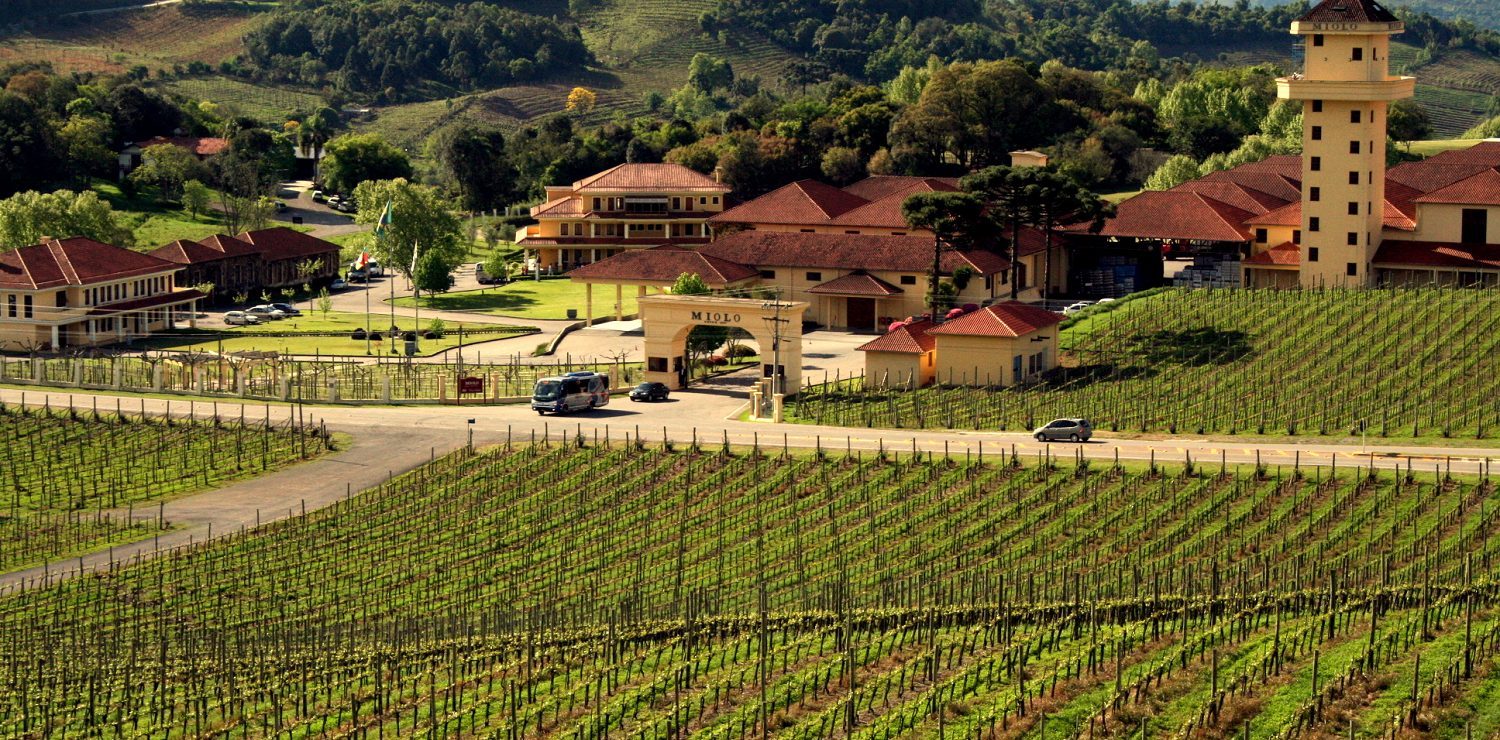The rise of wine in the country of “Auriverde”
A young couple speaks quietly, in a subdued and warm atmosphere. They are around a small table enjoying a glass of white wine. Here we are in one of the many Brazilian “novelas” that have started to demonstrate that wine, in recent years has become an important image in the social codes of Brazilian life. Previously unconcerned with wine production, Brazilians are showing more and more interest in fine wines, including those of their native country.
Wine in Brazil, a young tradition
Brazilian wine is a recent affair, dating back to the seventies. Wine has existed for a long time in the land of “caipirinha,’ but it was until then reserved for a very a small group of the middle class leaving those of lower social classes and favelas to consume only wine of very poor quality. Knowledge, commercial exchanges and globalization have made the Brazilians change their view on this product and roll up their sleeves to have a go at producing quality wines.
How the vine grew in Brazil
The vine was naturally imported in the sixteenth century by the Portuguese colonizers, then by the Spanish Jesuits in the seventeenth, by the colonists from the Azores in the eighteenth and finally by Italian immigrants who arrived in this country in the nineteenth century. It was immediately clear that the hot and humid climate of most of the Brazilian territory would not be suitable for the different grape varieties imported.
Naturally, this led the vine to be planted much more in the south, in the state of Rio Grande do Sul close to neighboring Argentina, where the air is fresher and cooler than the rest of the tropical country. The regions of São Roque and Jundiaí, in the state of São Paulo and Serra Catarinense in Curitiba, as well as the southern part of Minas Gerais are notable viticulture centres in Brazil. In the northeast, we have the “São Francisco Valley.”
Brazilian national wine, a long time coming
For many years, three quarters of the production was used to supply the country with table grapes, the rest being devoted to the production of average quality Brazilian wines. Essentially led by the “poor” Italian immigrants, these wines did not rally the local people who could afford the drink, who preferred for a long time to bring their bottles from the United States or from Europe (Spain and Portugal mainly). In addition, a very peculiar phenomenon in Brazil known as “viralata” was very ingrained in peoples minds: “if it comes from abroad, it is better”. This complex, which affects many other areas of Brazilian life, slowed for a long time the ardour of local winemakers. It was not until the 1970s that a new school of thought emerged in the wine industry: “If we start, we can succeed”!
A slow change in attitudes regarding Brazilian wine
Large companies who produced spirits already, decided to get involved in the wine – production of the country. The producers got together in cooperatives and improved their wines thanks to the know-how imported from abroad. The bad wine or the “blood of beef” gradually gave way to higher quality drinks. The fight is far from over since it is considered that three quarters of the wines distributed in the country, the table wines (vinhos de mesa) are still very modest bottles. Moreover, the quality wines (vinhos Fino) are often limited to white or sparkling. “Espumantes”, like the popular Chandon, for obvious reasons lead the pack in the country, the reds forming only a small part of the good wines to be found in Brazil.
Fans continue to import wine from Argentina or Chile, Brazilian production is currently not enough to satisfy them. In Brazil the extent of the national vineyard territory is about 50 000 hectares, whereas in France for example, you are closer to 1 000 000! In contrast to southern Europe where wine has been part of the DNA for centuries or even millennia, (since the times of the Greeks and Romans) Brazil is only discovering the subtleties of different grape varieties.
A beautiful variety of vines and vineyards
The (good) Brazilian wine is nevertheless promising. This is primarily due to the diversity of plants, from Europe or North America. It is from the latter that in the middle of the nineteenth century came the vine that is best adapted to Brazil, the Vitis Labrusca, planted in the south of the state of Rio Grande do Sul close to Uruguay and Argentina. Later came grape varieties from Europe, Riesling, Gewurztraminer, Muscat, Sauvignon or Semillon for whites, Tannat, Cabernet Sauvignon, Syrah, Pinot Noir and Gamay for reds.
The main production region is located in the southernmost part of the country, because it is here that it is the coolest, even the coldest: it can snow or freeze during the austral winter in the state of Santa Catarina. A notable exception is that of the “São Francisco Valley” located in the Northeast on an arid plateau west of Recife and Salvador.
Thanks to the natural irrigation of the São Francisco River (the third largest waterway in Brazil), it offers a soil that is suitable to grow certain varieties. The hot sun produces strong red wines, similar to Rhone valley, and rosés and sparkling white wines. Let’s not forget that we are in a hot country and so consumption, and appreciation, comes first and foremost with light, fresh wines. In the Southern region, it is different because the cool temperatures of the winter allow for more consumption of red wines.
A long way to go for Brazilian wines
Quality Brazilian wines, however, struggle to compete against their Chilean or Argentinean neighbours. Often cheaper, they also benefit from experienced producers. Nevertheless, production regions are doing well, such as the Vale dos Vinhedos in Serra Gaúcha located in the state of Rio Grande do Sul. It received designated protected status in 2012 as a region of wine production. Between 2013 and 2016, the International Wine and Spirits Competition awarded 23 prizes to Brazilian wines.
Encouraged by the “Embrapa Uva e Vinho” (Brazilian agri-food, grape and wine research company), more and more winemakers are restructuring their areas to increase production and quality, and acquire new skills through continuous training provided by the organization. This phenomenon is particularly noticeable since the beginning of the 2000s and responds to the need of producers to find a real identity on the national market … and worldwide.
The road to travel is still long: the quality of the production remains relatively irregular and consumers of fine wines buy 38% local, whereas the import figure is at 62%. It is therefore missing a few million hectolitres to fill the gap.




